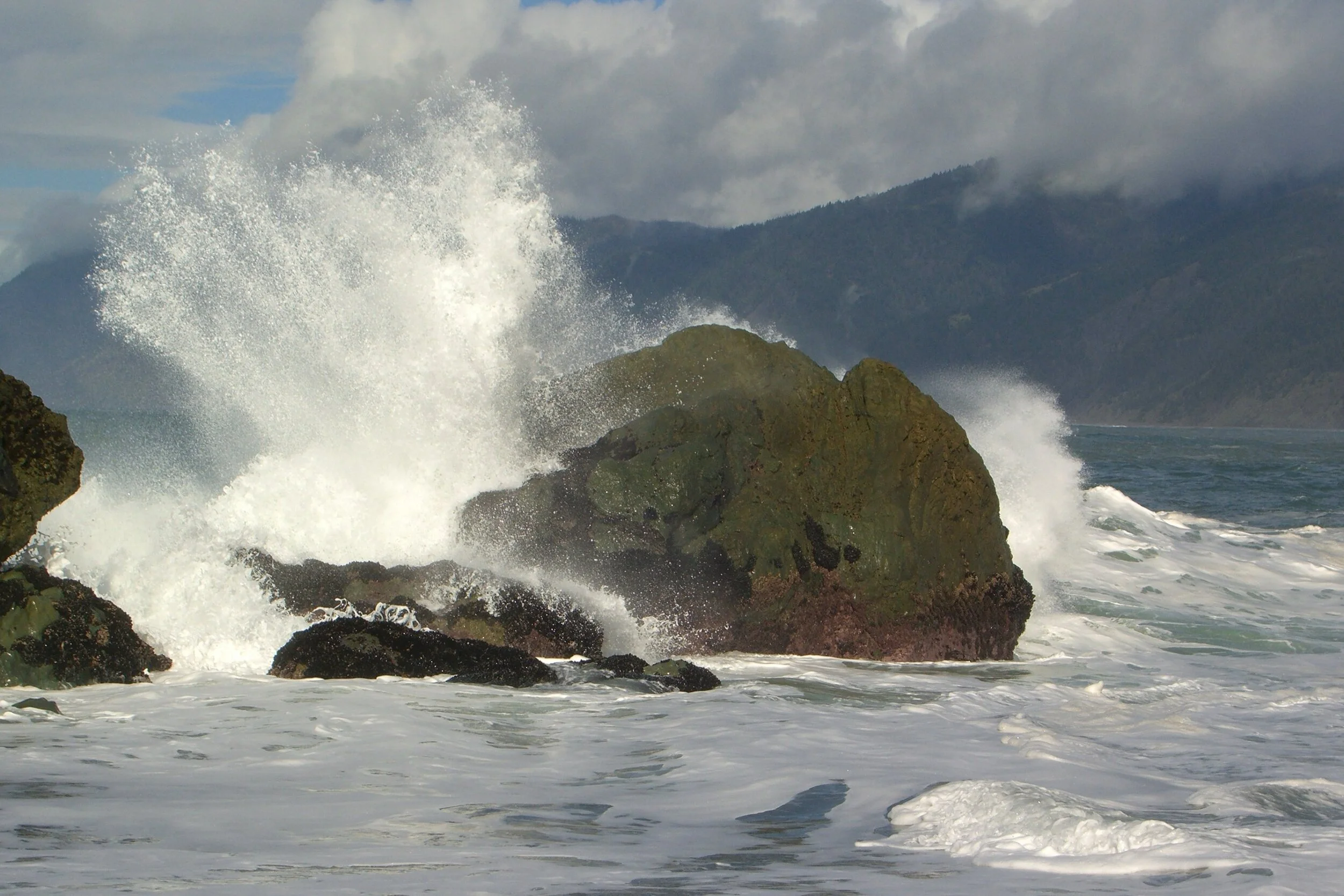Image courtesy of Wikimedia Commons
By Catelyn Fitzgerald ’23
Staff Writer
Wave energy recently reached a new milestone in the United States: The first testing site for large-scale electricity production has been approved in the country. The site, called PacWave South, is located off the Oregon coast and will be used by various companies to determine the viability of their wave energy converters (WEC). The goal of the site is to determine which wave energy technologies can be adapted for full-scale commercial use.
As with other renewable energy sources like the sun and wind, waves contain an incredible amount of energy. This energy can be harnessed and used to generate electricity to power homes and businesses. Waves off U.S. coasts have enough energy to hypothetically provide around 2.64 trillion kilowatt hours of electricity per year. This is an impressive amount of power considering the U.S. generated 4.01 trillion kilowatt hours of electricity last year. About 60% was generated from fossil fuels, 20% from nuclear energy, and 20% from renewable energy sources, according to the U.S. Energy Information Administration.
While WECs take many different forms, they all work in a similar fashion — the kinetic energy stored in the motion of waves drives a turbine, which powers a generator located either in the water or onshore. This process of using the motion of water to generate electricity is also referred to as “hydropower.”
The idea behind wave energy is not new. The first patent for wave energy was issued in 1799. Many scientists have previously attempted to develop WECs, but there has not yet been enough success for renewable energy to be used in most countries. Scotland stands out for having made significant progress with the technology. For the past five years, the Scottish company Nova Innovation has powered vehicles and homes on the Shetland Islands using wave energy. They pioneered the first active electric vehicle charger using wave energy. Despite the success demonstrated in Scotland and a few other countries, wave energy remains practically unheard of in the U.S. and is far from being ready for the grid.
Associate Professor and Chair of Physics at Mount Holyoke College Alexi Arango weighed in on the topic, explaining that wave energy could be a valuable part of the United States’ renewable energy profile, but that it would only be worthwhile for small-scale uses.
“If we’re asking the question, ‘Can we supply all of the United States with wave energy,’ the answer is no. It’s just not even in the same ballpark,” Arango began. “If you’re asking, though, if you can supply a couple of cities along the West Coast, or at least, [if it is] possible to contribute to the energy mix of cities along the West Coast, the answer, I would say, is yes.
By his calculations, if WECs were installed along 50 percent of the West Coast, wave energy could supply five kilowatt hours of electricity per day per person in the U.S., compared to the average usage of almost 300 kilowatt hours per day by Americans.
One of the greatest benefits of wave energy is that, compared to other renewable energy sources, it is consistently available for capture. Wave energy could play an important role in filling in the gaps when there is no wind or sun available.
“I think there’s an advantage to having a diversity of sources of energy,” Arango said. While wave energy may not make much of an impact on its own, its value is highest when it is part of a larger renewable strategy.
“Some of the challenges of wave energy relate to survival in a very harsh environment,” Arango said. WECs need to be able to resist corrosion from the saltwater and survive being battered by storms, especially as climate change increases the frequency and severity of weather events.
Building WECs that can withstand conditions out at sea adds to the cost of production, so finding the minimum amount of added material necessary for long-term performance will be a crucial part of making the technology economically viable. Another issue that wave energy has is limitations due to land use policies, such as the existence of protected areas along the coasts and resistance from local communities, who may see WECs as an eyesore if placed too close to the shore.
Arango was most concerned about the viability of wave energy in the context of a quickly shrinking timeline to avert the worst effects of climate change. “It’s a question of how much time do we have and how much money do we have in order to come up with ideas to fund experimental projects, to fund all of the [research and development] that needs to be done in order to get the technology to a point where it’s economical,” he raised.
While it may be possible to integrate wave energy into U.S. electricity production on a commercial scale, it will take years and a significant amount of funding, making it potentially more worthwhile to focus on renewable energy sources that are already operating on a commercial scale.
When asked what Mount Holyoke students should take away from the possibility of wave energy, Arango emphasized the importance of local power generation. “I might prefer to first exploit solar and wind sources with small-scale solar and small-scale wind,” Arango said. “I can foresee problems — perhaps problems with wave energy where there is an environmental harm or a social harm that is hidden from view out at sea.”

